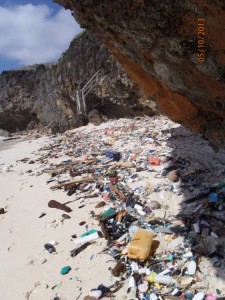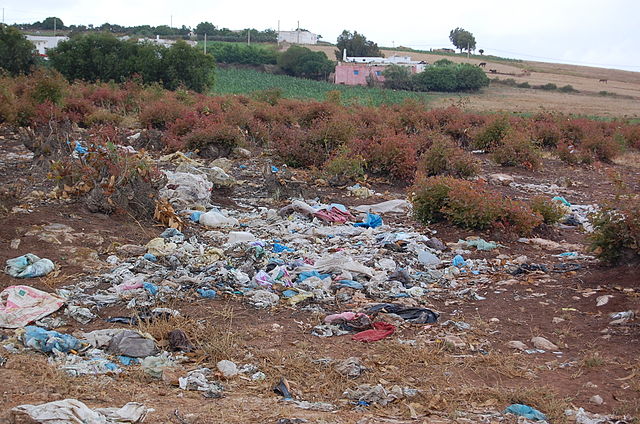By Shar Adams
Epoch Times
SYDNEY—California has become the newest region to ban lightweight plastic bags, joining four states and territories in Australia in restricting the use of disposable plastics. The move comes as Australian researchers study the toxicity of plastics, which are polluting the marine environment at a molecular level.
The Californian ban was signed into law on Sept 30, making plastic bags in grocery stores and pharmacies prohibited from July 1, 2015, with convenience and liquor stores to follow a year later.
In Australia, non-biodegradable lightweight plastic bags are banned in Tasmania, South Australia, the Northern Territory and the Australian Capital Territory, but the legislation does permit the use of compostable, bio-degradable bags.
While the bans on bags represent important progress, researchers are finding the threat of plastics goes deeper than the disposable products we can see. Professor Richard Banati from the the Australian Nuclear Science and Technology Organisation (ANSTO) says the full lifecycle of plastic is not yet understood and its degradability is questionable, particularly when litter is left to float in oceans.
 The present paradigm is “the solution to pollution is dilution” but his research indicates otherwise.
The present paradigm is “the solution to pollution is dilution” but his research indicates otherwise.
“Dilution has its limits,” he said in a phone interview.
Beyond the Visible
There is no doubt that on a visible pollution level plastic is a huge problem. Scientists have found evidence of plastics choking or smothering many marine animals and ecosystems.
In a report released last month, Australia’s Commonwealth Scientific and Industrial Research Organisation (CSIRO) found plastic constituted most of the rubbish floating along Australia’s coastline, with densities ranging between a few thousand pieces of plastic per square kilometre to more than 40,000 pieces.
“About three-quarters of the rubbish along the coast is plastic,” said CSIRO scientist Denise Hardesty after collating data from survey sites every 100 km along the Australian coastline. “Most is from Australian sources, not the high seas, with debris concentrated near cities.”
Professors Banati’s work, however, looks beyond the visible. Using nuclear scientific methods he is examining a more insidious interaction – plastic contamination at the molecular level.
Following the results of an earlier collaboration with biologist Dr Jennifer Lavers, who was researching plastic in shearwater birds, the two scientists found that when plastic interacts with sea water, it absorbs heavy metals, becoming more toxic as it degrades. Looking at shearwater feathers at the molecular level they have identified the presence of plastic particles.
“Micro plastic particles are perfectly bite sized pieces for things like krill, zoo plankton, filter feeders and all of the marine creatures at the very base of the marine food web,” Dr Laver said.
Professor Banati is now collecting a larger sample for further research, conducting his own survey from Hobart to Sydney Harbour.
His aim is to identify the full life cycle of plastic, its impact on marine life and the food chain.
The forensic method, he said, will make plastic traceable and in that respect make producers and consumers accountable.
It is the increasing use of plastic on a mass level that is the concern. Identifying the full life cycle of plastic will allow for a better understanding for industry and government of how and when it can best be used.
“Traceability will allow us to make policy decisions,” he said.
via Australian Scientists Find Plastic’s Toxic Footprint at Molecular Level![]()
![]()
![]()
![]()








